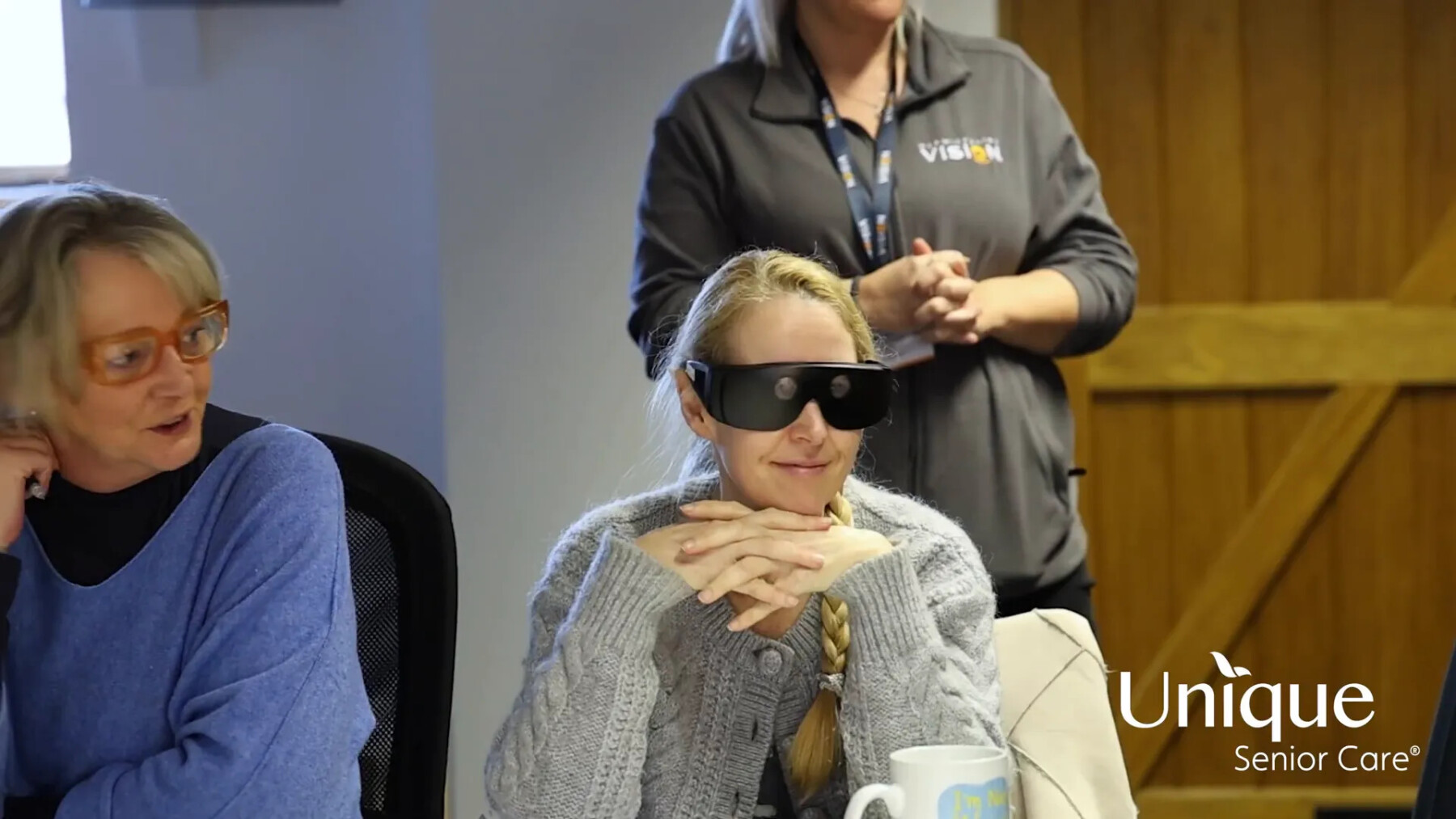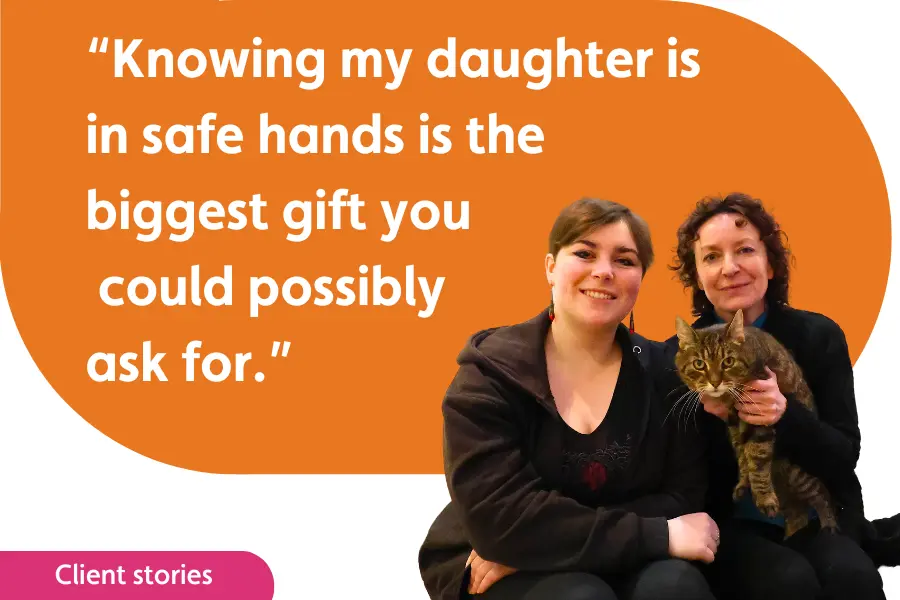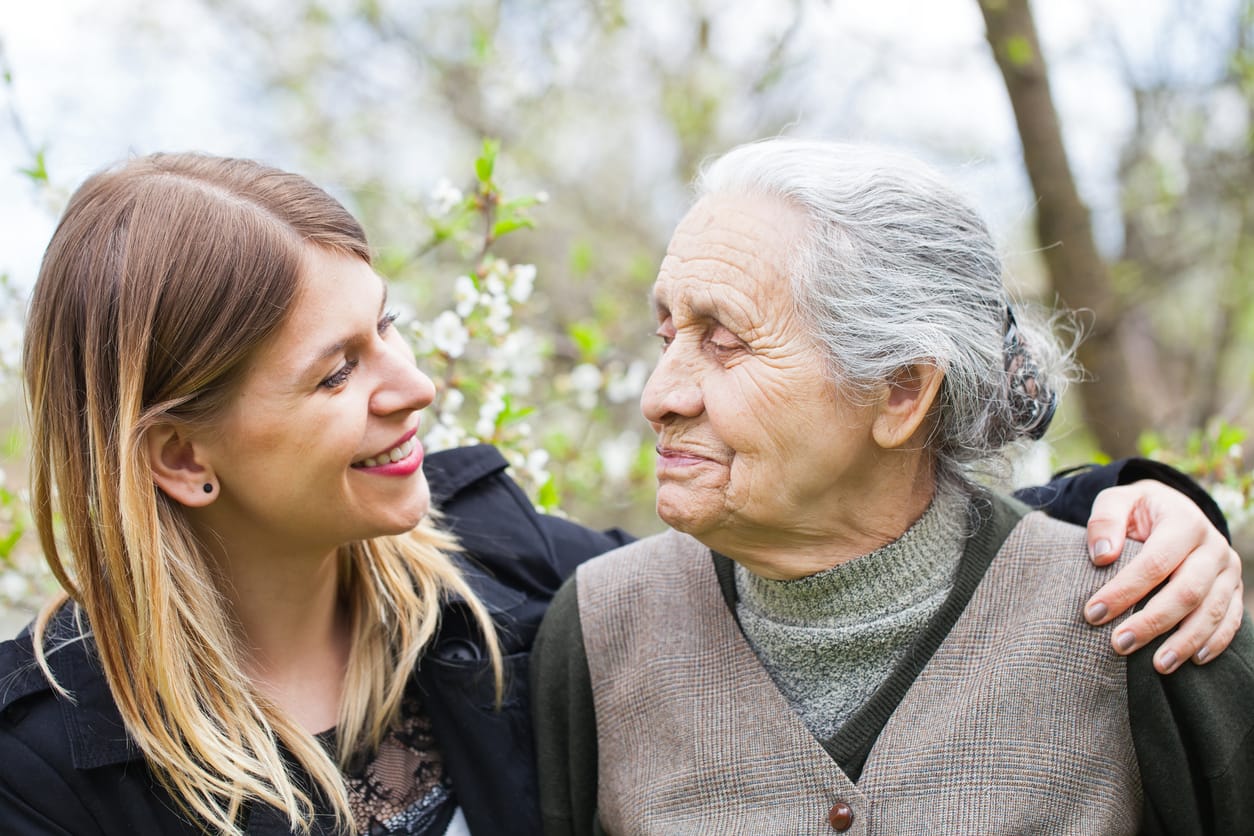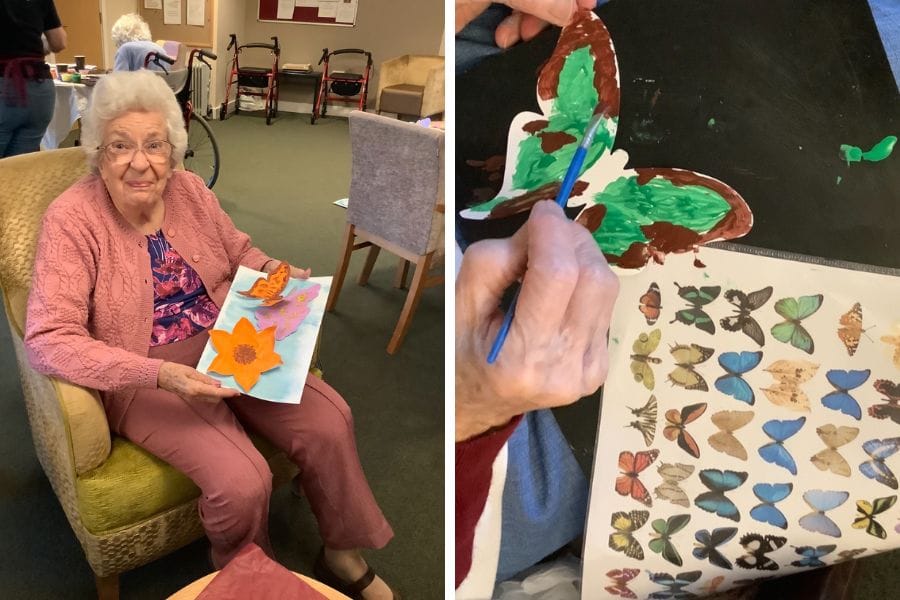At Unique Senior Care, we recently had the pleasure of attending a Warwickshire Vision training session that proved both enlightening and practical. Led by the knowledgeable Imka, the workshop was designed to help caregivers understand the nuances of visual impairment and learn hands-on strategies for offering more effective support.
Understanding Visual Impairment
Visual impairment affects countless people worldwide and encompasses far more than just blindness. Conditions like macular degeneration, glaucoma, diabetic retinopathy, and cataracts can each alter a person’s perception of the world, affecting everyday tasks such as reading, moving around, and connecting with others.
It’s easy to overlook how varied these challenges can be. For instance, someone might struggle with depth perception, another might be extra sensitive to glare, and a third person could find distinguishing colours more difficult. Recognising these differences is the essential first step in building an environment that helps people maintain their independence and feel confident.
Key Types of Visual Impairments:
- Macular Degeneration: Impacts central vision, making fine details hard to see.
- Glaucoma: Known as the “silent thief of sight” because it often steals peripheral vision.
- Diabetic Retinopathy: A diabetes-related condition that damages blood vessels in the retina, potentially leading to vision loss.
- Cataracts: Clouding of the eye’s lens that can make vision blurry, sometimes progressing to complete sight loss if untreated.
The Importance of Support
When you can’t see the world clearly, it’s natural to feel vulnerable. Thoughtful and consistent support is vital for helping individuals with sight loss retain their freedom and overall wellbeing. Caregivers who demonstrate patience, empathy, and understanding can make an enormous difference.
Simple acts, like asking before you help someone cross the room or describing where you’ve placed objects, can go a long way towards making someone feel safe and valued. Even small changes in daily routines—such as rearranging furniture to reduce hazards—can significantly improve quality of life.
How You Can Help:
- Always check if help is welcome before providing it.
- Give clear, descriptive instructions or information.
- Keep areas well-lit and free from clutter.
- Consider using contrasting colours to help people navigate.
Meet Imka: Our Guide for the Day
Imka from Warwickshire Vision Support led the session with warmth and expertise, clearly passionate about her mission to empower those with sight loss. She highlighted the importance of understanding each person’s unique challenges and how creating welcoming, accessible spaces can transform their daily experiences.
Throughout the training, Imka cultivated an open, interactive environment. She encouraged participants to try practical exercises, share their own reflections, and explore meaningful ways to support individuals with visual impairments.
Purpose of the Training Session
The primary goal of this workshop was to bolster confidence among caregivers. Imka emphasised practical demonstrations: participants were given simulation glasses to experience what living with various visual conditions might feel like. Trying to read a sign or walk through a room with altered vision revealed how disorienting certain everyday activities can become.
This hands-on approach fosters empathy and offers a powerful insight into the genuine difficulties people with impaired vision often encounter. By feeling these challenges ourselves, we can adapt our caregiving approaches to be more thoughtful and precise.
Building Confidence in Care
Helping someone with a visual impairment often begins with clear communication and respect for personal boundaries. Through guiding techniques and open conversation, caregivers can offer steady support without seeming intrusive or overwhelming.
Imka shared a range of guiding methods, such as lightly touching a person’s elbow or arm (with permission) to help them move confidently. She also stressed announcing any upcoming changes—like steps, kerbs, or variations in ground level—so the individual knows exactly what to expect.
Essential Guiding Techniques:
- Introduce yourself before offering help, so the person knows who you are.
- Ask how they prefer to be guided—everyone’s comfort level is different.
- Provide brief but clear verbal descriptions of surroundings as you walk.
- Flag any obstacles, steps, or uneven terrain in advance.
Practical Exercises: Simulation Specs
A standout part of the day involved simulation specs, which mimic conditions such as cataracts or glaucoma. Participants tried everyday tasks—like reading or searching for common items—while wearing these glasses. The experience was eye-opening, prompting many to remark on how disconcerting or frustrating these tasks can become.
By immersing ourselves in a visually impaired individual’s perspective, we learned first-hand the importance of sensitive, proactive support. This sort of empathy is a powerful tool in making a person feel genuinely understood.


Through awareness and understanding, caregivers can help individuals with visual impairments navigate their world with confidence and dignity. This training is just one step towards fostering a more inclusive environment for all.
The Role of Lighting and Contrast
Lighting and colour contrast can significantly affect how someone with impaired vision perceives the world. Here are a few ways to enhance visibility:
- Natural Light: Use as much natural light as possible, as it tends to reduce glare.
- Adjustable Lighting: Dimmer switches or lamps with adjustable brightness allow customisation for each person’s needs.
- Colour Contrast: Placing light objects against dark backgrounds (or vice versa) helps people distinguish their surroundings more easily.
- Limit Glare: Arrange furniture and fittings so sunlight or bright reflections don’t create harsh glare.
These adjustments can make spaces more user-friendly, giving individuals confidence to move about safely.
Equitable Choices for All
True equity in care means ensuring that those with visual impairments have the same chances and choices as anyone else. It’s about:
- Encouraging Independence: Letting individuals decide how they’d like to handle tasks, and providing discreet support when needed.
- Promoting Inclusivity: Making sure communities and services welcome people with sight loss, inviting their participation and valuing their input.
- Providing Resources: Linking individuals to tools, assistive technologies, and local groups tailored to sight impairment.
- Advocating for Rights: Championing policies and practices that support equal treatment, respect, and opportunity.
By standing up for inclusive values, we help people with visual impairments live fuller, more empowered lives.
Empowering Confidence in Interactions
Good communication goes beyond the physical. It’s also about making someone feel genuinely heard. When you engage with an individual who has a visual impairment, keep these strategies in mind:
- Active Listening: Give them space to share their thoughts.
- Positive Reinforcement: Recognise small milestones and celebrate progress.
- Patience: Visual impairment can slow down certain tasks or conversations, and that’s perfectly fine.
- Shared Activities: Find activities you both enjoy—cooking together, tackling a puzzle, or even heading out for a walk.
These small, compassionate actions can boost self-esteem and help forge meaningful connections.


Supporting Lives with Sight Loss
Providing outstanding care for someone with visual impairments calls for empathy, knowledge, and consistent practice. By honing essential guiding skills, using lighting and contrast effectively, championing equitable choices, and fostering confidence in our interactions, we can make a real difference. This training session was a pivotal step in shaping more inclusive environments—not only for our clients but for anyone living with sight loss.
To learn more about supporting people with diverse care needs, explore our blog posts on Supporting Unpaid Carers and What is Nursing Care and Do I Need It? These resources can help you expand your caregiving toolbox and create even more positive experiences.
FAQs on Visual Impairment Training
It’s a course or workshop that teaches caregivers how to support individuals with sight loss effectively. It covers practical techniques, awareness of different eye conditions, and how to create inclusive spaces.
Seek specialised training, read up on best practices, and ask for guidance from experienced professionals. Patience and empathy are crucial in every interaction.
Local charities, support groups, assistive technologies, and community health services can all offer tailored help and advice. Warwickshire Vision Support is one local example.
Raise awareness in your community, push for better access to resources, and champion policies that uphold their rights. Even small steps—like encouraging open discussions—matter.
Discover More Support & Information For Your Care Journey
Visit our Learning Centre for expert articles, helpful videos, in-depth guides, and answers to common questions - helping you make informed care decisions with confidence.
Explore NowWith a background spanning over two decades in the field of marketing, I have had the privilege of working across diverse industries, ranging from insurance to sports, technology, and health & well-being.
While my previous experience did not directly involve care services, I have acquired a deep understanding of the sector’s needs and challenges through my wife. For the past eight years, she has been dedicated to providing the highest level of support to her clients as a compassionate caregiver.
Witnessing the profound impact that committed caregivers have on their clients’ lives when the opportunity arose to join the esteemed team at Unique Senior Care, it was an easy decision for me to make.
During my free time, you may find me leisurely strolling across fields with a metal detector in hand, eagerly exploring the possibility of unearthing hidden treasures. Alternatively, I love nothing better than making the most of our National Trust membership and cherishing precious moments spent with my family.
I am genuinely thrilled to be a part of the Unique Senior Care team, where I can bring my expertise to the table and share a sincere passion for enhancing the lives of those we serve.


